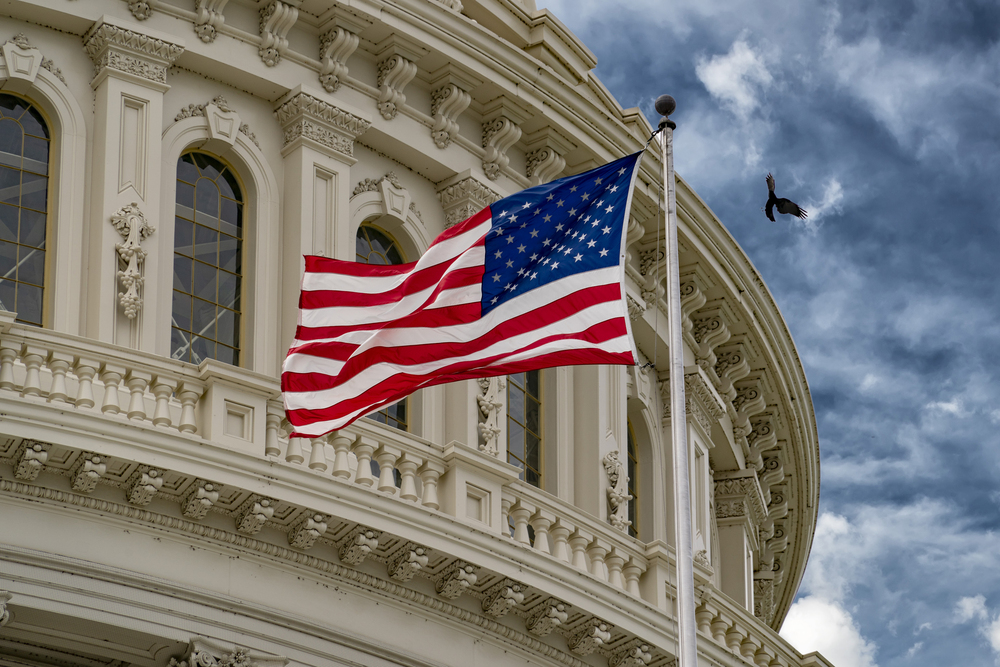In American politics, a safe state is a state where one major political party consistently wins elections with a significant margin of victory. These states rarely change their voting patterns, making them predictable in national elections.
Unlike swing states, which can reasonably be won by either Democrats or Republicans in any given election, safe states reliably vote for the same party cycle after cycle.
Safe states play an important role in electoral strategy. Political campaigns typically allocate fewer resources to these states, choosing instead to focus their time and money on battleground states where the outcome is less certain. For example, California is considered a safe Democratic state, while Texas has traditionally been a safe Republican state.
The concept of safe states isn’t permanent, though. Political demographics shift over time, and today’s safe state might become tomorrow’s battleground. These changes can occur due to population migration, evolving voter priorities, or shifts in party platforms. This dynamic nature makes American electoral politics constantly interesting despite some predictable elements.
Defining a Safe State in Politics
In American electoral politics, safe states represent predictable voting patterns where one political party consistently wins elections. These states form a key element of electoral strategy and campaign resource allocation.
Characteristics and Meaning of a Safe State
A safe state refers to a state where one political party has established consistent electoral dominance over time. These states show a reliable voting pattern in favor of either Democrats or Republicans across multiple election cycles. For example, California has been a safe Democratic state since 1992, while states like Oklahoma and Wyoming are considered solidly Republican.
Safe states typically show voting margins of 10 percentage points or more for the dominant party. The predictability of these states allows political campaigns to focus resources elsewhere.
Historical voting trends, demographic composition, and cultural factors all contribute to a state’s status as “safe.” Blue states consistently vote Democratic, while red states reliably support Republican candidates.
Differences Between Safe, Swing, and Battleground States
Safe states stand in stark contrast to swing states (also called battleground or purple states), where electoral outcomes are less predictable. While safe states show consistent support for one party, swing states frequently alternate between parties across different elections.
Competitive states receive significantly more campaign attention, advertising dollars, and candidate visits than safe states. Presidential candidates often take safe states for granted, knowing they’ll either win or lose them regardless of campaign efforts.
Swing states like Florida, Pennsylvania, and Wisconsin determine electoral outcomes in close elections. These states feature more balanced voter demographics and ideological distributions.
Safe states may change their status over time. Virginia, once reliably Republican, has trended Democratic in recent presidential elections, demonstrating how demographic shifts can transform electoral landscapes.
Political Parties and Safe State Dynamics
The two-party system in American politics reinforces the safe state phenomenon. Major parties develop specialized platforms and messaging that appeal to their base in safe states while crafting more moderate positions for swing state audiences.
Primary elections often see different dynamics in safe states, with candidates sometimes taking more ideologically pure positions to appeal to the dominant party’s base voters. This can create a feedback loop that reinforces partisan alignment.
Safe state status affects down-ballot races too. In heavily Democratic or Republican states, the dominant party typically controls most state and local offices.
Some critics argue the safe state system diminishes voter engagement. Voters in these states may feel their presidential votes matter less than those cast in battleground states, potentially affecting turnout in non-competitive races.
Safe States and U.S. Presidential Elections
Safe states play a crucial role in shaping presidential election strategies and outcomes. These states consistently vote for the same political party across multiple elections, creating predictable patterns that influence how campaigns allocate resources and attention.
Role in the Electoral College and Presidential Campaigns
The Electoral College system fundamentally shapes how presidential candidates approach safe states. In most states, electoral votes are awarded on a winner-take-all basis, meaning whichever candidate wins the popular vote in that state receives all of its electoral votes.
Safe states provide candidates with a reliable base of electoral votes they can count on without significant campaign investment. This allows presidential campaigns to focus their limited time, money, and staff on battleground states where the outcome is less certain.
For example, California has voted Democratic in every presidential election since 1992, while Texas has consistently supported Republican candidates since 1980. Campaigns typically spend minimal resources in these states.
Campaign strategists often take safe states for granted, which can sometimes backfire if demographic shifts or extraordinary circumstances alter voting patterns.
Impact on Popular Vote and Electoral Votes
Safe states contribute significantly to the disconnect that can occur between the popular vote and electoral vote outcomes. A candidate can win safe states by large margins, accumulating millions of “extra” votes that don’t translate to additional electoral votes.
This mathematical reality explains how a candidate can win the popular vote while losing the Electoral College, as happened in 2000 and 2016. Democrats often win huge margins in populous safe states like California and New York, while Republicans may win their safe states by smaller margins.
The concentration of safe states for each party creates regional voting blocs. The West Coast and Northeast lean Democratic, while much of the South and rural Midwest favor Republicans.
This pattern affects presidential governance too, as candidates may feel less accountable to voters in states they didn’t win and have no realistic chance of winning in the future.
Demographics, Voter Turnout, and Political Stability
Demographics strongly influence which states become safe for which party. Urban areas with diverse populations typically favor Democrats, while rural, less diverse regions tend to support Republicans.
Voter turnout in safe states is often lower than in battleground states. When residents believe their state’s outcome is predetermined, they may feel less motivated to participate in the democratic process.
Safe states can experience political stability but also stagnation. When one party dominates, policy innovation may decrease and minority party voters may feel unrepresented.
The status of safe states isn’t permanent. Demographic shifts, migration patterns, and economic changes can transform safe states into competitive ones. For instance, Virginia shifted from reliably Republican to Democratic-leaning, while West Virginia moved in the opposite direction.
Political realignments can also alter the safe state map, as parties adapt their platforms and messaging to changing voter priorities and demographic realities.
Significance and Future of Safe States in American Politics
Safe states significantly impact campaign strategies, resource allocation, and political representation in American elections. They create both stability and challenges for the democratic process.
Influence on Political Representation and National Outcomes
Safe states shape how political campaigns allocate resources and attention. Candidates often neglect voter outreach in these areas, focusing instead on swing states where electoral votes remain competitive. This creates an imbalance in political representation.
For example, in the 2020 presidential election, both Republican and Democratic candidates concentrated their campaign stops and advertising dollars in just seven swing states, effectively ignoring tens of millions of voters in safe states.
Congress members from safe states may face different incentives than those from competitive districts. Representatives from firmly red or blue states might adopt more partisan positions without fear of electoral consequences.
The population concentration in safe states also affects electoral outcomes. California and New York are Democratic strongholds with large populations, while Texas has historically been Republican with a significant population base.
Challenges for Democracy and Electoral Reform Discussion
The concentration on swing states raises concerns about democratic representation. Many political blogs highlight how voters in safe states feel their votes matter less, potentially decreasing participation rates and civic engagement.
Various electoral reform proposals aim to address these imbalances. The National Popular Vote Interstate Compact represents one approach to make every vote count equally regardless of state status.
Some political analysts note that safe states aren’t permanently fixed. Texas, long considered safely Republican, saw margins narrow from 9% in 2016 to 5.5% in 2020, suggesting demographic shifts might transform current safe states into future battlegrounds.
Reform advocates argue that the current system forces candidates to focus narrowly on a handful of states rather than developing policies that benefit the entire country. This geographic selectivity can distort national priorities and policy development.





